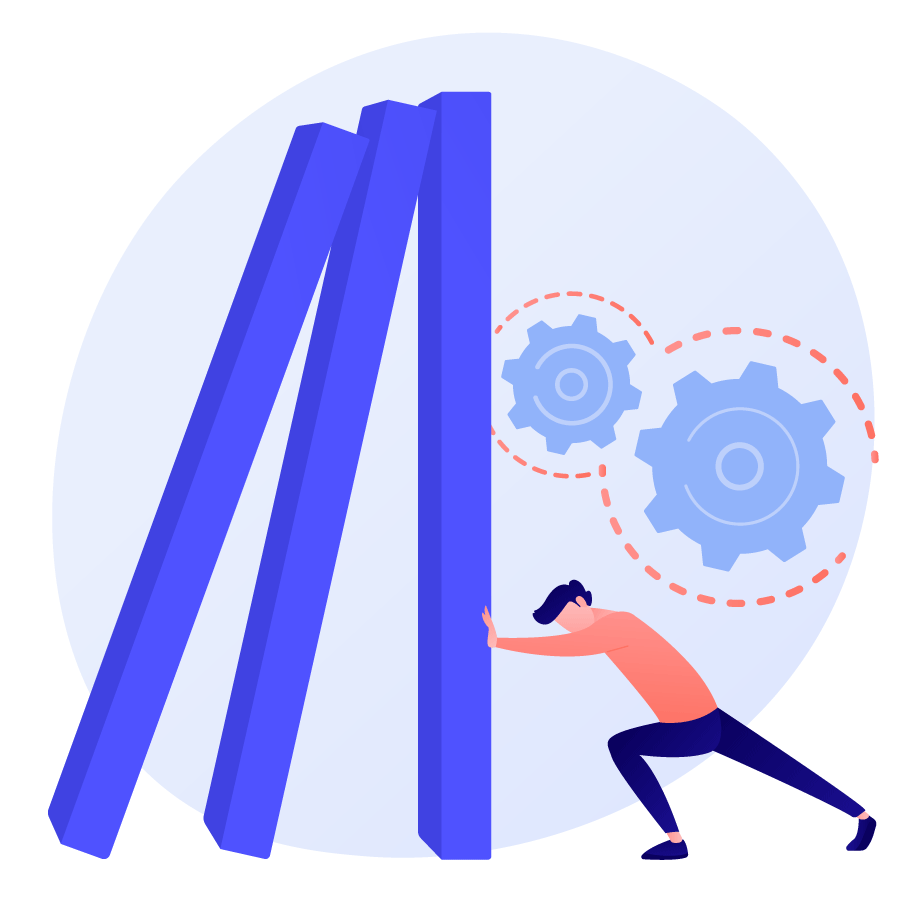
COVID-19 has impacted the world in ways never imagined before. From altering our work situation to affecting our personal lives, we are all engaged in a battle to combat the crisis. Businesses have been equally impacted, from severed supply chains, hampered procurement channels, burdened IT capacity to modified working style. To understand this better, we’ve conducted a joint survey with SSON for taking a deep dive into how the crisis has impacted businesses and what are the next steps initiated to ensure a future-proof strategy.
To conduct this survey, almost 200 organizations, headquartered around the globe, took the time to respond. Roughly 3/4 of respondents are corporates. Most claim global footprints, with half of the enterprise respondents having operations in APAC (including China and India), compared to 2/3 of BPO respondents.
Here are some insights:
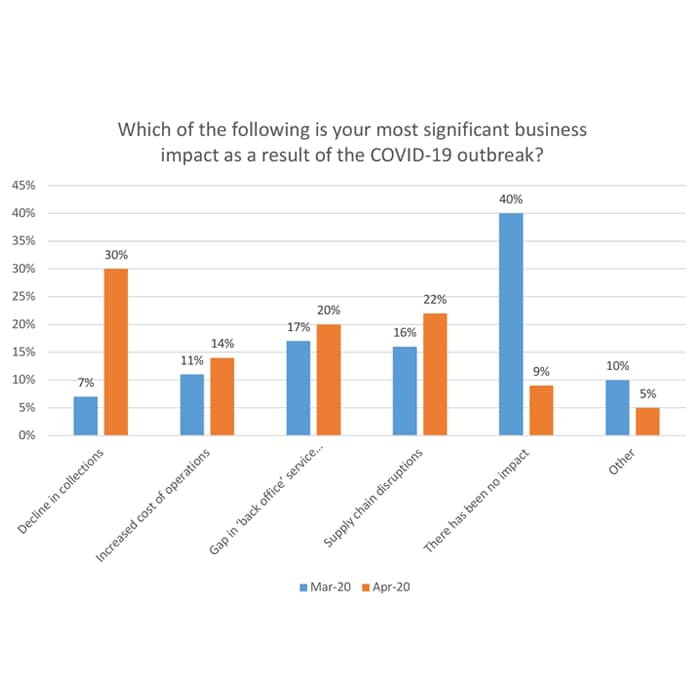
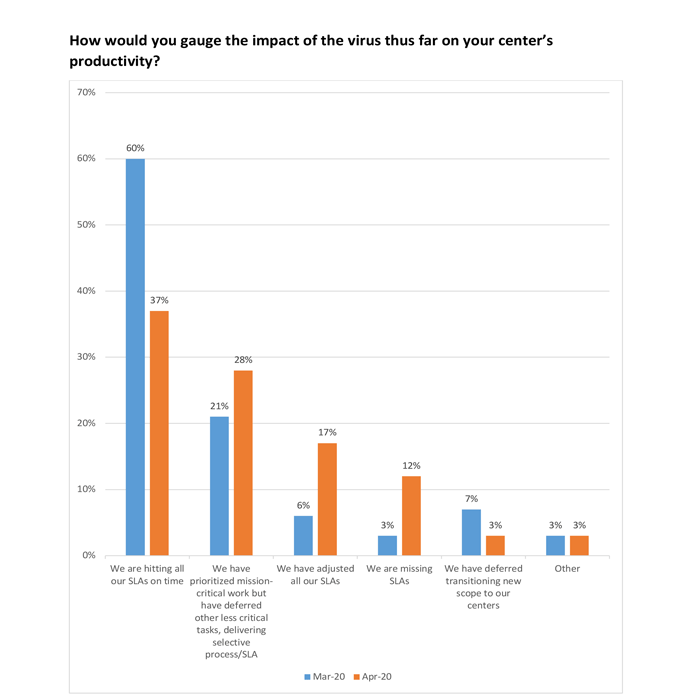
What are your major Business Continuity Planning challenges?
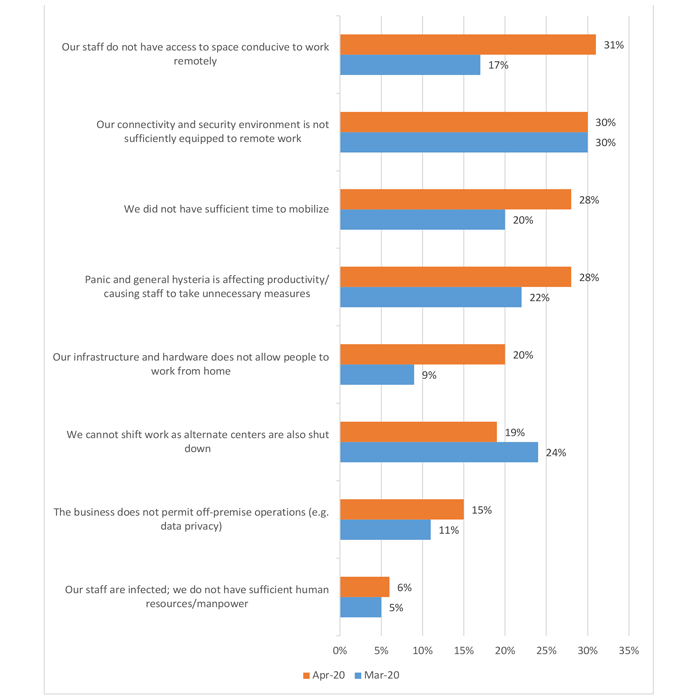
What are you doing today to adapt your service delivery models to the current business environment?
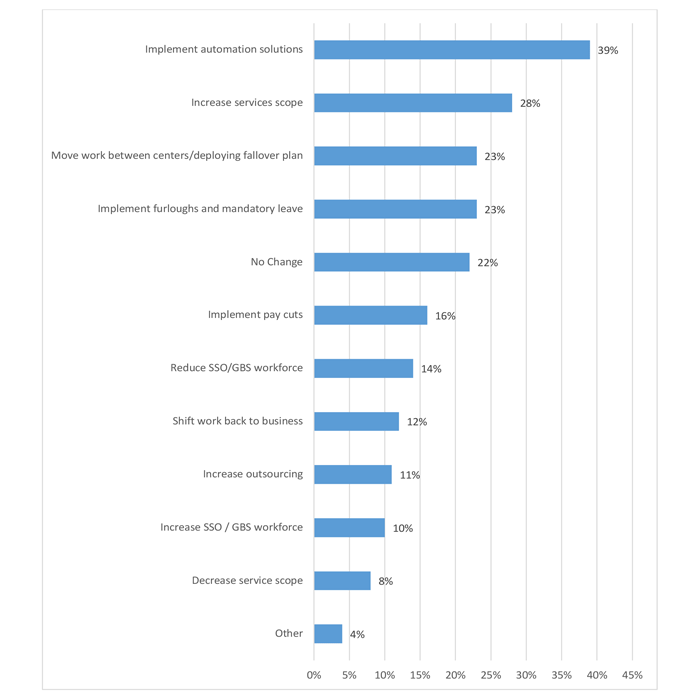
Wanting to delve deeper into these findings, we conducted a video chat with Satish to discuss the survey findings in detail. A seasoned professional with over 20 years of experience, Satish Nair heads Digital Services at Infosys BPM, and is responsible for re-imagination of existing business processes and creation of New Services to help customers navigate their Digital journeys. He has successfully enabled enterprise to navigate their Automation journeys and has also seen some large enterprises exhibit resilience over these difficult times. Here is an excerpt to the interview which throws light on how enterprises are coping and what’s the way ahead.
In Conversation with Satish Nair
What is more difficult is where low maturity coincides with a growth imperative. Without the appropriate automation framework, the problem is staring in your face —and one I don’t have an answer to right now.



